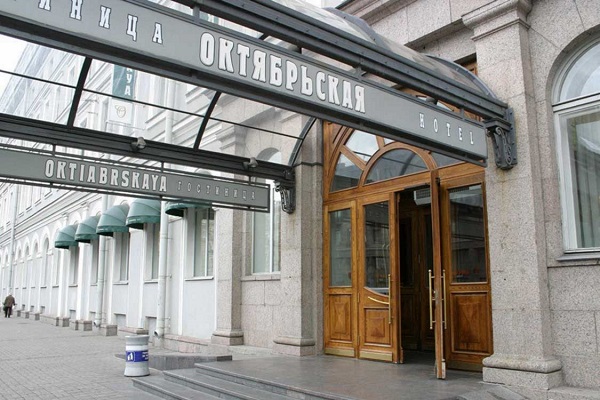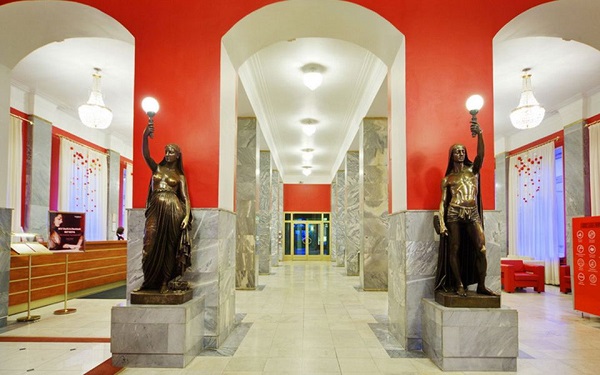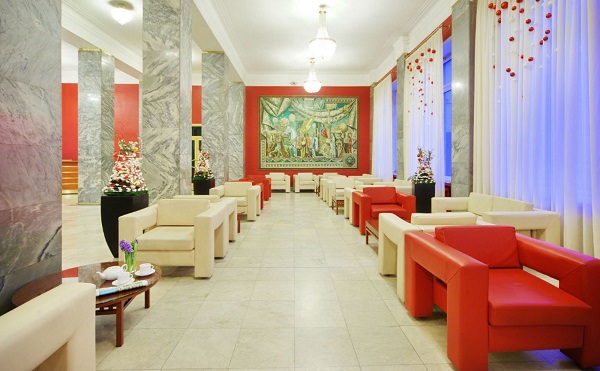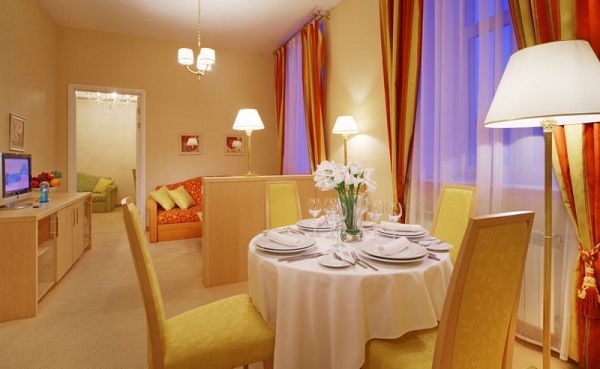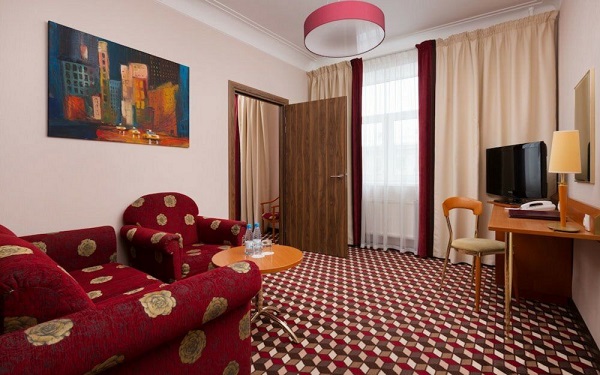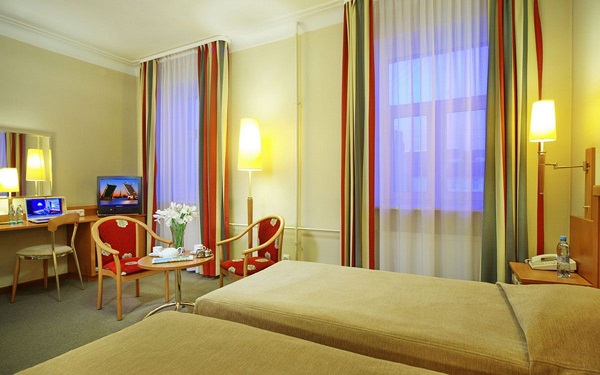Oktiabrskaya Hotel in St Petersburg
During the reign of Peter I in 1714, the first elephant arrived in St. Petersburg - a gift to the Russian tsar from the Shah of Persia. By the 1730s, there were already a few of them and they lived on the “Beast Yard” on the bank of the Fontanka. In September 1741, the imperial court received 14 more elephants as a gift, which required it to equip a special place for these huge animals. The office from the buildings has chosen a place that is "above the Ligov Canal, at the pool, sandy, high and overgrown with pine forest." Here, on the north side of the future Vosstaniya Square, in 1744 the “Elephant Yard” appeared
The territory was enclosed with a fence, on the gate hung a sign with the inscription "Her Majesty's Elephant Hunt". Around the fence constantly crowded people. Here from the carts there was a trade of different foods.
Initially, the entrance to ordinary people here was closed. The townsfolk could see elephants only during their walks to the pond dug where the buildings of the Rauchfus Hospital now stand (Ligovsky pr. 8). Later, the animals were brought to the city for display to the public. They were taken out for a walk to the Neva along the glade, which later became Slonovaya Street (now Suvorovsky Prospekt). For the elephants constantly followed by a crowd of onlookers. Pointing to their aimless pastime, St. Petersburgers began to say - "slonyayutsya" (stick around).
In 1778 the Elephant yard ( Slonovy Dvor) was transferred to Tsarskoye Selo. The carriage sheds appeared on the vacant space, next to them - residential wooden houses. To the square they went out with wooden fences.
The fate of the entire area changed the appearance here of the Nikolaevsky (now Moscowsky) station. Before its construction in 1844, architect N. Ye. Efimov developed a plan for the area planning. On its northern side, they marked up a large plot, which Nicholas I donated to the merchant Ponamaryev "with his comrades" for the construction of a hotel and commercial establishments with their money. Construction was ordered to begin in the same 1845, and to complete all work after three years. Ponamaryov did not fulfill his duties, the site was transferred to Count Stenbock-Fermor.
The project of the four-story Stenbok-Fermor building, built at its expense, was carried out by architect A. P. Gemilian. On the drawings signed by him there is an inscription "I watched Zhelyazevich". Building a hotel at the train station, the count saw her not just as a hotel, but as an entertainment institution with a casino, halls for masquerades. The emperor did not approve such an approach to business, which is why Stenbock-Fermor quickly sold the hotel. However, the name "Znamensky Station" then stuck to the hotel. The station was originally called not a railway station, but an entertainment facility near it. It has always been in England, and in Russia the word "railway station" quickly stuck to any station as such.
In 1860, the new proprietor of the plot, Princess Vachnadze, opened a hotel with 85 rooms in Znamensky Railway Station. Since that time, the hotel has been leading its history, which immediately became one of the largest in St. Petersburg. For some time she continued to comply with the status of the “station”, as there was a winter garden, a dance hall. The hotel hosted concerts at which well-known domestic and foreign artists performed. However, the entertainment function of the hotel gradually faded out, as its owners were increasingly interested in income, depending on the number of rooms.
The hotel building was rebuilt several times. In 1878, the fifth floor was added to the building for the hereditary honorary citizen of N. V. Tulyakov by architect I. I. Klimov, and then the facade was changed. In the years 1895-1900, according to the project of A. S. Khrenov, the hotel became a six-story building with a dome in the middle. The number of rooms then reached 150, most of which were decorated with luxury for wealthy travelers. The hotel was equipped with a restaurant with 500 seats - the largest in the capital. By this time the hotel was called Bolshoy Severnoy.
In the late 1920s, architect A. I. Gegello simplified the appearance of the facade, giving it constructivist features.
During World War II, the hotel building was given to employees of the tram depot as a hospital. It was cold, without heating, but the tram and trolleybus workers restored the heating system and equipped the kitchen. The hospital accepted up to 400 people, he saved a lot of people from starvation.
In 1960-1961, builders of trust number 16 of Glavleningradstroy attached to the hotel a neighboring building along Ligovsky Prospect (house number 10-12).
The facade of the hotel "Oktyabrskaya" in the 1970s was close to the historic finishers of the Fasadremstroy-1 trust. The scaffolding from the building was removed on November 7, 1979. A major overhaul of the building was carried out according to the design of the Lengiprostroy Institute (chief architect - V. N. Pitanin). During these works, the foundation was strengthened, a significant part of the walls were reinforced with reinforced concrete structures, and the floor slabs were replaced. The hotel has only single and double rooms. Together with the branches "Severnaya" and "Moskovskaya" the hotel had almost 2,500 beds.
After the reconstruction of the 1970s, the facade of the hotel "Oktyabrskaya" was painted in accordance with the Moscow railway station in a light green color. Already in our time it has become light beige.
To learn more about the history of St. Petersburg and its modern life, book a tour and contact us if you have questions about staying in the city on the Neva River.
Read more
- How to travel in Saint Petersburg without living your home
- Four of the ten best restaurants in the country are in St. Petersburg
- The first Holocaust museum in St. Petersburg
- A scientist from St. Petersburg created the biochronicle of Peter the Great.
- 10 interesting facts about Saint-Petersburg streets
